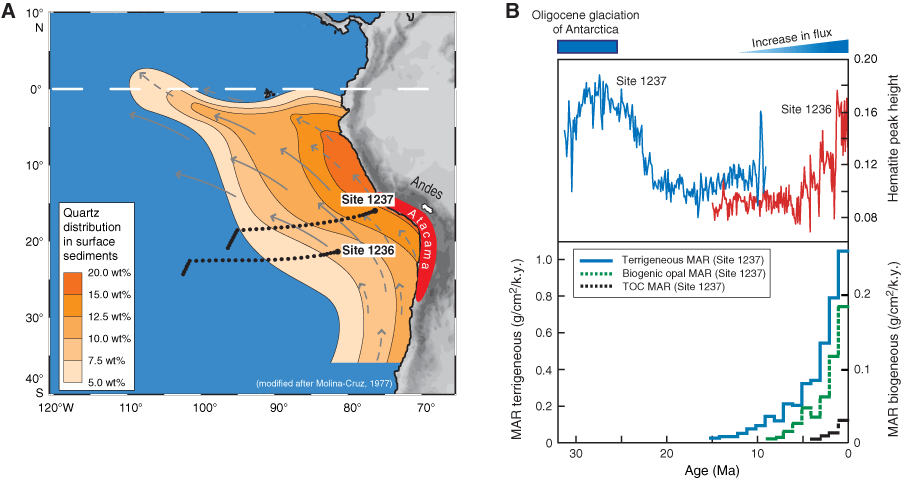
Figure F9. A. Quartz distribution in surface sediments of the subtropical southeast Pacific, expressed as weight percentage (carbonate- and opal-free basis, reproduced from Molina-Cruz, 1977). Arrows indicate trade winds. Sites 1236 and 1237 are shown with their plate tectonic backtracks. B. Hematite peak height at Sites 1236 and 1237. The hematite peak height is derived from color reflectance spectra and serves as a proxy for changing concentrations of hematite. Mass accumulation rates (MAR) of total organic carbon (TOC), biogenic opal, and terrigenous material (terrigenous MAR was estimated as 100% – wt% CaCO3 – wt% organic matter – wt% biogenic opal/sedimentation rate dry bulk density). Shipboard magnetostratigraphy and biostratigraphy were used to calculate sedimentation rates that were smoothed to avoid overinterpretations of the preliminary age model. Terrigenous MAR is used as a proxy for dust flux; biogenic opal and TOC MAR are used as a proxy for paleoproductivity.


![]()